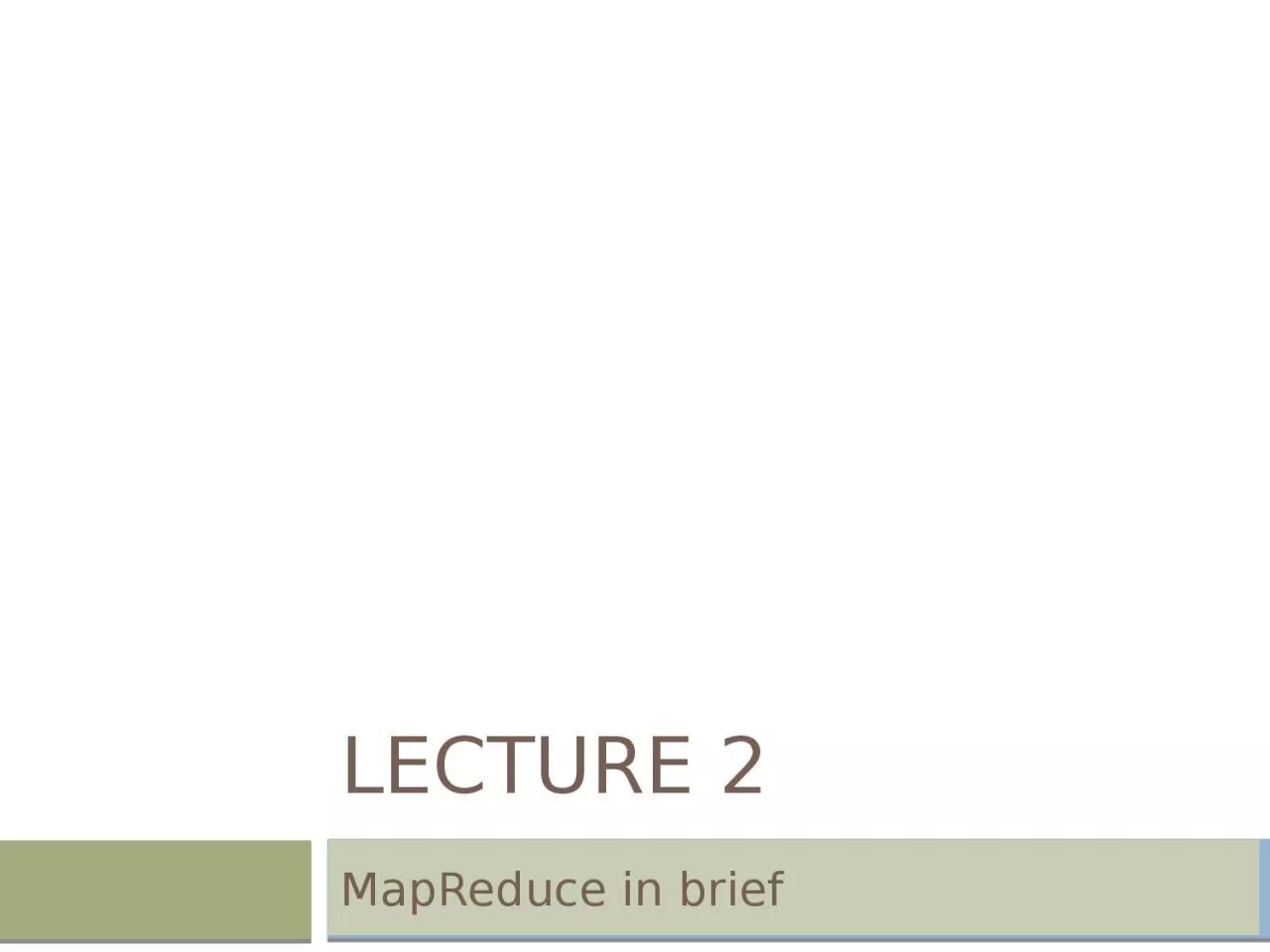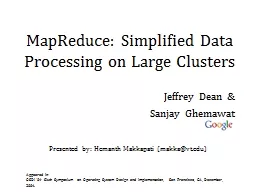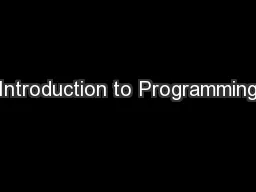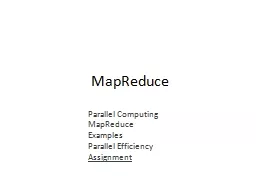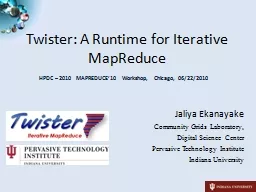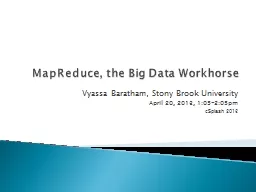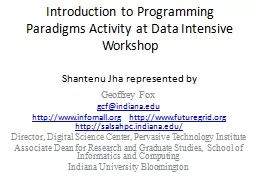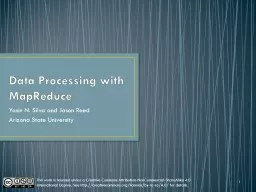PPT-Lecture 2 MapReduce in brief
Author : Savageheart | Published Date : 2022-08-03
Source MapReduce Simplified Data Processing in Large Clusters Jefferey Dean and Sanjay Ghemawat OSDI 2004 Example Scenario 3 Genome data from roughly one million
Presentation Embed Code
Download Presentation
Download Presentation The PPT/PDF document "Lecture 2 MapReduce in brief" is the property of its rightful owner. Permission is granted to download and print the materials on this website for personal, non-commercial use only, and to display it on your personal computer provided you do not modify the materials and that you retain all copyright notices contained in the materials. By downloading content from our website, you accept the terms of this agreement.
Lecture 2 MapReduce in brief: Transcript
Download Rules Of Document
"Lecture 2 MapReduce in brief"The content belongs to its owner. You may download and print it for personal use, without modification, and keep all copyright notices. By downloading, you agree to these terms.
Related Documents

